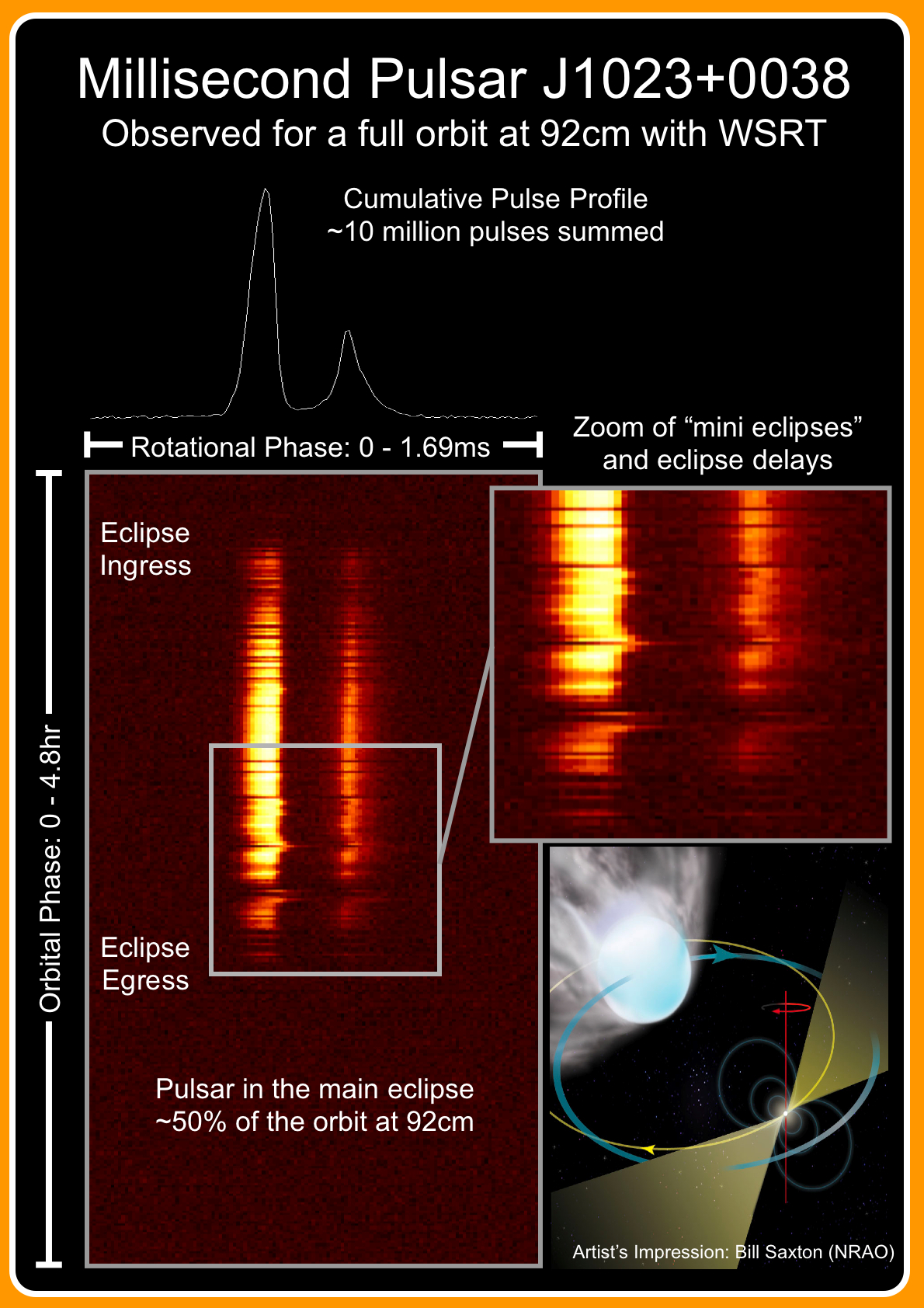Daily Image
26-05-2009Westerbork Observes the Eclipses in a Unique Millisecond Pulsar Binary System
| Submitter: | Jason Hessels, Joeri van Leeuwen, and Ben Stappers |
| Description: | PSR J1023+0038 is a recently discovered radio millisecond pulsar (Archibald et al. 2009) which provides a unique view of the evolutionary link between the accreting "low-mass X-ray binaries" and their descendants, the radio millisecond pulsars - see also yesterday's AJDI. We are intensively observing PSR J1023+0038 using the WSRT and PuMaII pulsar data recorder. At low observing frequencies, this pulsar is eclipsed for roughly half of its orbit. These eclipses are likely due to material orbiting in the system, which has been blow off of the pulsar's companion star by the pulsar's strong winds (see bottom right for an artist's impression). In addition to the relatively stable "main" eclipse, there are sporadic "mini" eclipses and small delays in the pulse arrival times, which may be due to smaller clumps of material orbiting in the system, and which vary from orbit to orbit. The main plot shows the pulse intensity as a function of orbital and rotational phase for a full orbit of the pulsar around its companion star. All the pulse periods, roughly 10 million in a single 4.8-hr orbit, are added together at the top to produce a high signal to noise cumulative pulse profile (note that this pulsar has a double-peaked profile). We have observed this pulsar simultaneously at 350MHz and 1.4GHz using the Westerbork and Lovell telescopes in order to investigate the frequency dependance of these eclipses. We are interested in knowing if there is any relation to the accretion disk which existed while the system was still in its low-mass X-ray binary state, and which was responsible for spinning the pulsar up to its 1.69-ms (592Hz) rotation rate. |
| Copyright: | JWTH (ASTRON), Bill Saxton (NRAO) |
| Tweet |  |
